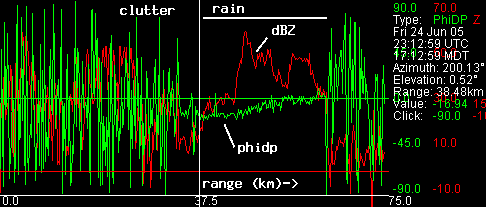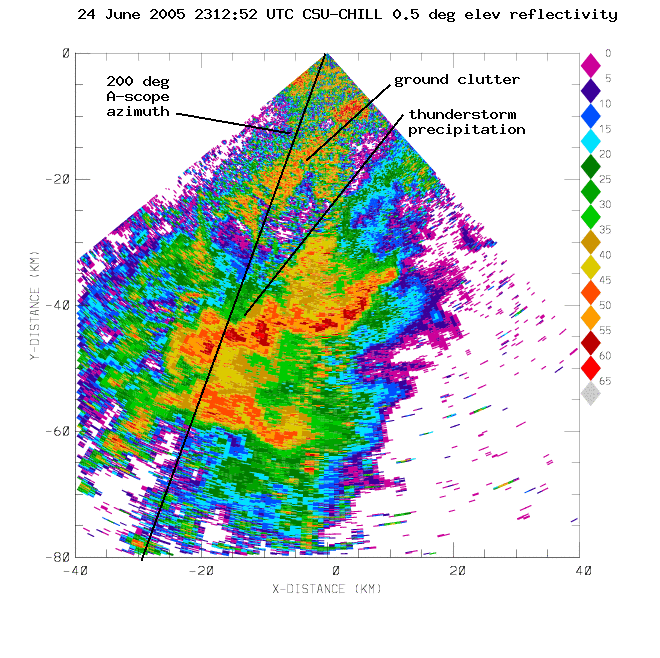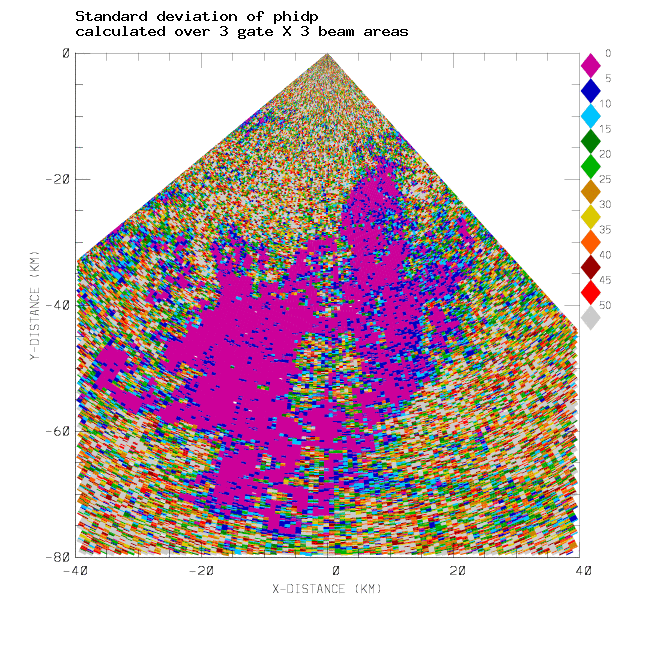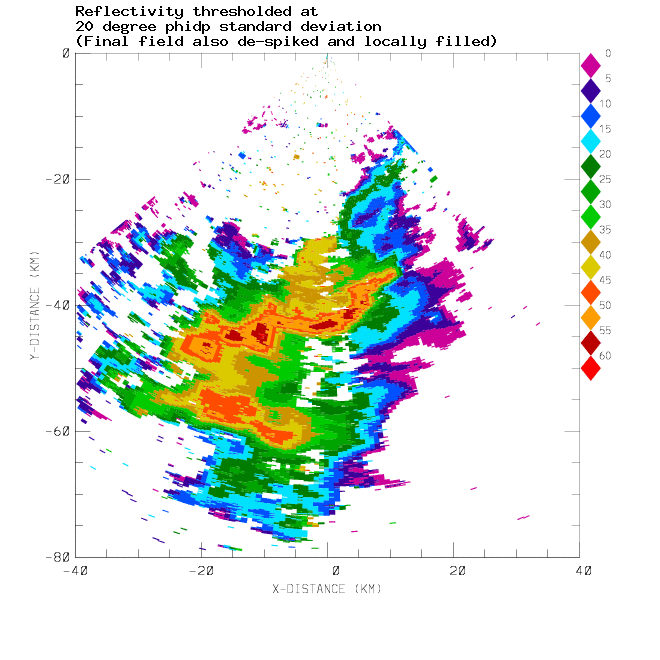PhiDP variability in clutter

Conceptual Summary
The differential propagation phase signal generally displays the least noisy behavior in precipitation echoes where Rayleigh scattering conditions prevail. In contrast, differential propagation phase shift upon scattering (delta), typically produces large phidp fluctuations when ground targets are being illuminated. The A-scope plot above shows a ray trace taken from a 0.5 degree PPI sweep made by the CSU-CHILL radar. The reflectivity values are plotted in red; phidp is in green. The first ~35 km range interval includes clutter, after which convective rain echo is encountered. The reduced phidp fluctuations in the rain echo are apparent.
This characteristic allows the standard deviation of phidp to be used to discriminate
between meteorological and non-meteorological echo classes. Shown below are three versions
of the PPI scan from which the A-scope ray was taken. The initial reflectivity plot shows
both the thunderstorm echo and the close range clutter area. The second plot shows the
standard deviation of phidp calculated over 3 gate by 3 beam subregions. The large
standard deviations outside of the precipitation echo are quite evident. The final plot
shows the original reflectivity field thresholded to remove the data when the standard deviation
of phidp exceeds 20 degrees. (An additional despiking and local filling step was also done
to further clean up the image.) The information provided by polarimetric radar data is of
considerable use in separating meteorological echoes from other target types.



VCHILL
Main article: VCHILL
References
- Alexander V. Ryzhkov, Terry J. Schuur, Donald W. Burgess, Pamela L. Heinselman, Scott E. Giangrande and Dusan S. Zrnic. 2005: The Joint Polarization Experiment: Polarimetric Rainfall Measurements and Hydrometeor Classification. Bulletin of the American Meteorological Society: Vol. 86, No. 6, pp. 809-824.